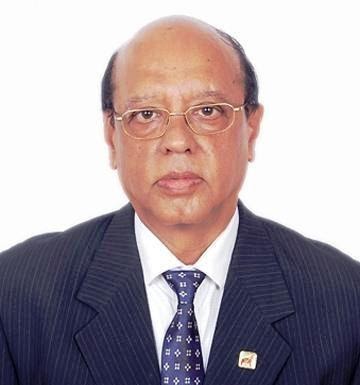The hobby of postage stamps collection is called Philately. Jainism is an interesting subject in the Philately. Many stamps have been issued on Jain Gods, Jain pilgrimage centers, Jain personalities, Jain symbols, Jain temples and architecture etc.
First, we will have a look on the stamps issued on Jain pilgrimage centers. The first stamp on Jainism was issued by the Indian princely state Saurashtra on 18th October 1929 (Stamp-1). This 3 paisa stamp bears a view of Girnar Hills, near Junagadh, from where 22nd Jain Tirthankar Neminath Bhagwan had attained Nirvan. Girnar is a very important Jain pilgrimage centre.
The Indian Government issued the first stamp on Jainism on 6th May 1935 bearing Shitalnath Jain Temple of Calcutta which was constructed in the year 1868 A.D. and famous for its artistic work of mirrors and enamel on its wall and ceiling (Stamp-2). This 1-114 Anna stamp was part of a set of four stamps of temples and shrines issued to commemorate the Silver Jubilee of the reign of King Gorge V.
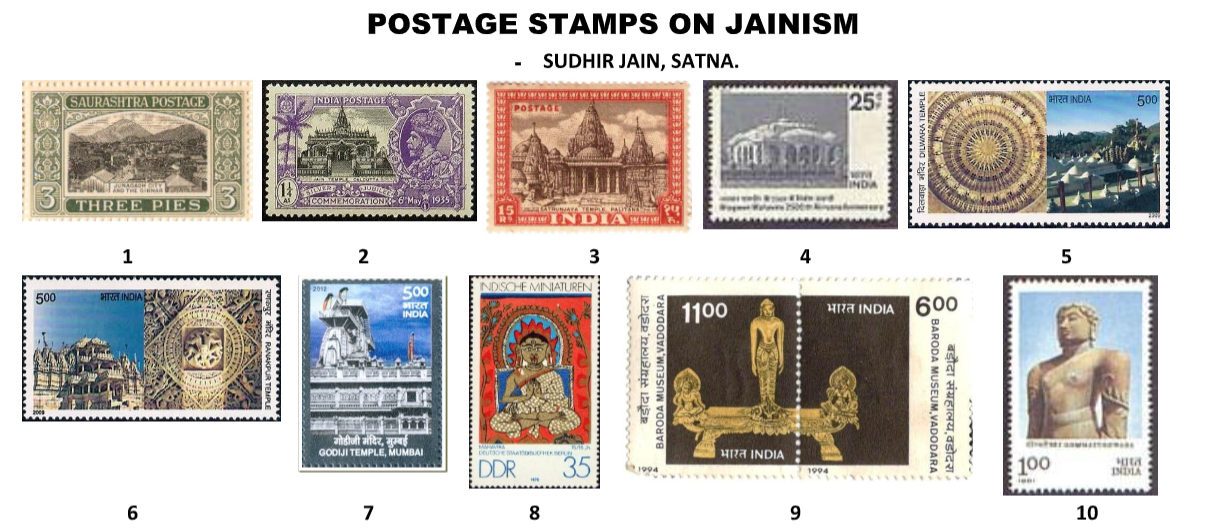
On 15th August 1949, 15 rupees stamp was issued depicting the Shatrunjay Temple of Palitana (Gujarat) which is the temple of Bhagwan Rushabhnath made in the year 1618 A.D. and famous for extra fine examples of carvings and architecture. This stamp was part of the first archeological definitive series of 16 stamps (Stamp-3).
On the occasion of the 2500th Nirvan anniversary of Bhagwan Mahavir, a stamp was issued on 13th November 1974 (Stamp-4). This 25 paisa stamp depicts the Jal Mandir (Lake Temple) of Pawapuri (Bihar) from where Bhagwan Mahavir attained Nirvan.
On 14th Oct 2009, India Post issued a set of two beautiful stamps on Dilwara Temple and Ranakpur Temple (Stamp-5 & 6). The first stamp depicts a group of Dilwara Jain temples and a beautiful carving from one of the temples. The Ranakpur temple is printed on the second stamp along with an attractive carving from this temple.
To commemorate the 200th anniversary of the Godiji Parshwanath Jain Temple of Mumbai, 5 rupees stamp was issued on 17th April 2012 (Stamp-7). This temple is located in Pydhonie. Seth Amichand of Khambhat constructed a gruh jinalay which was moved to Pydhonie in the year 1803. His sons Nemchand and Motishah built the present temple and its pratistha ceremony was conducted in the year 1812.
Now we will have darshan of Jain Gods on the stamps. East Germany was the first country apart from India which had issued a stamp on Jainism. On 8th May 1979 East Germany issued a set of four stamps on Indian miniature paintings. One of these showed the beautiful 15th -16th century painting of Bhagwan Mahavir which is preserved in the Berlin Museum (Stamp-8).
To celebrate the centenary of the Baroda Museum, a se-tenant pair (pair of two stamps) was issued on 20th December 1994 (Stamp-9). This se-tenant stamp bears the picture of an ancient 6th century bronze statue of Bhagwan Rushabhnath exhibited in the Baroda Museum. Bhagwan Rushabhnath was the 1st Tirthankar and considered as the 18th incarnation of Lord Vishnu. He educated people about different jobs (Sam Karma) for their livelihood. He also invented the Script and Numerical.
Bhagwan Bahubali was the son of first Tirthankar Bhagwan Rushabhnath. A 57-foot statue of Bahubali called GOMATESHWARA was erected by the Chamundaraya, a royal minister, on the top of a 300-foot-high hill at Shravanbengola (Karnataka) in the year 981 A.D. This statue is an attraction for visitors from all over the world. On the occasion of the millennium year of this statue, a 1-rupee stamp was issued on 9th February 1981 (Stamp-10).
Now we come to Jain architecture. Jain Saraswati is the presiding deity for language, learning and knowledge (Vidy5). There are illustrations of Jain Saraswati in various Jain volumes with Sastra (scripture) in her hand. Two synonymous and attractive idols of Jain Saraswati are exhibited in different museums. One is at the National Museum, New Delhi which was obtained from a Jain Temple of Pallu village (Bikaner District of Rajasthan). Two Indian stamps issued in the year 1975 depicts this 12th century Jain Saraswati. One stamp was issued on 10th January 1975, on the occasion of World Hindi Convention (Stamp-11) and another stamp was issued on 12th April 1975 on the occasion of World Telegu Conference (Stamp-12). Another similar idol of Jain Saraswati is exhibited at the British Museum, London which was obtained from Saraswati Mandir, Dhar (M.P.).
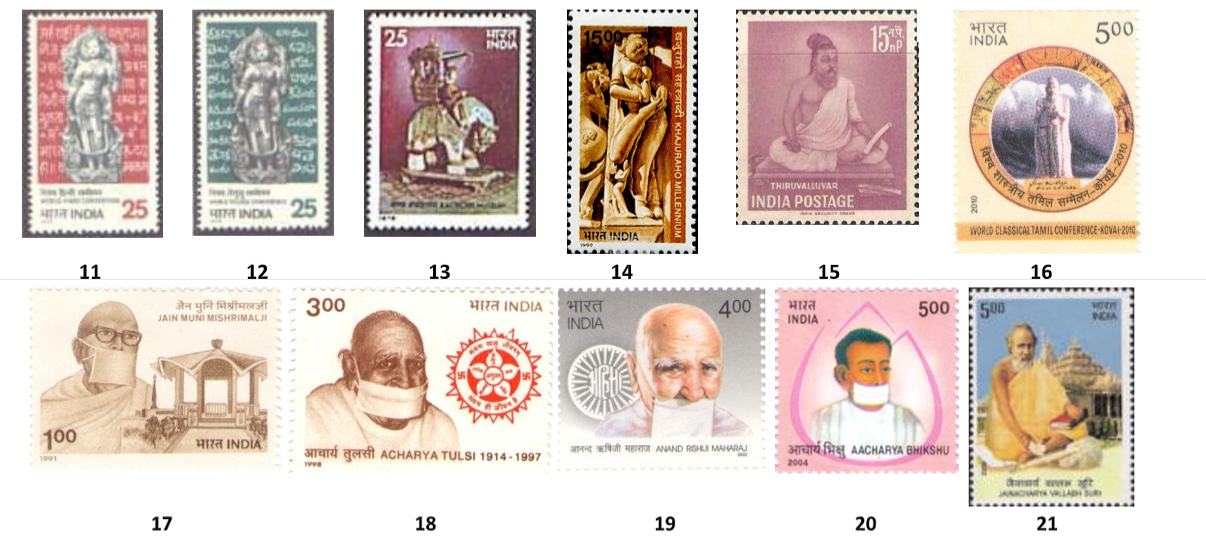
On 27th July 1978, a 25 paisa stamp was issued under the Treasures of Museum Series at the Kutch Museum showing an ancient wood carving of a mythological Airavat elephant (Stamp-13). This beautiful piece was taken from an old Jain temple in Gujarat and now exhibited at Kutch Museum.
Hindu and Jain temples of Khajuraho are internationally famous. Although there are in all 34 Jain temples at Khajuraho, from architectural point of view the Parshwanath, the Adinath and the Shantinath temples are relatively more important and noteworthy. Parshwanath temple was built by King Pahil. On the occasion of the Khajuraho Millennium, 15 rupees stamp was issued on 6th March 1999 depicting Apsara removing a thorn from her foot (Stamp-14). This beautiful idol is from Parshwanath temple.
Now we will, see Jain personalities on stamps. It is believed that Tamil poet and philosopher Saint Thiruvalluvar was Jain. He was the first Jain personality who was honoured by the Government of India by issuing a stamp. His popular collection of couplets on religion, ethics, political and economic matters is known as Thirukkul. Two stamps have been issued in India on Saint Thiruvalluvar. The first stamp was issued on 15th February 1960 (Stamp-15). The second stamp was issued on 27th June 2010 on the occasion of the World Classical Tamil Conference KOVAI (Stamp-16). On this stamp a l33-foot tall stone statue of Saint Thiruvalluvar is printed which was unveiled on 1st January 2000 at Kanyakumari.
Spiritual Saint and Philosopher Jaina (Sh.) Muni Mishrimalji was a profound orator. He had written in Sanskrit, Hindi, Urdu, Prakrit and Rajasthani. There are more than 5,000 pages of Prose & Poetry to his credit. He fought against socio-religious superstitions and evil practices and led the Social reformation movement. A stamp was issued in his memory on 24th August 1991 (Stamp-17).
Famous Jain saint Acharya Tulsi took asceticism at an early age of 11 and at 22 he was appointed “Acharya”. He launched the “Anuvrata Movement” for the reinforcement of human values in life, giving the slogan “Self-discipline only is life”. He established the Jain Vishwa Bharti Institute and took the herculean task of research of Jaina Agamas and published their critical editions in 32 volumes. A stamp was issued on him on 20th October 1998 (Stamp-18).
Acharya Anand Rishiji Maharaj was born at Ahmadnagar (Maharastra) in August 1900 and at the age of 13, committed himself to a life of spiritual pursuits and service to humanity. He was proficient in nine languages and mastered the Jain Scriptures as well as ancient philosophical texts of the Sanskrit language. His teachings were deep rooted in love, non-violence and tolerance. He had founded numerous educational and religious institutions. He was bestowed with the title of “Acharya” in the year 1965 and died in the year 1992. A stamp was issued on him on 9th August 2002 (Stamp-19).
Founder of the Jain Svetambar Terapanth Sect, Acharya Bhiku, was a philosopher saint, perceptive writer, sensitive poet, and social reformer. He composed about 38000 shlokas and his writings have been compiled in two volumes as “Bhikosu Granth Ratnakar”. He was born on the 13th day of the Ashad in the Vikram Samvat calendar year 1783, in the village Kantaliya (Rajasthan). He had established the Terapanth religious Sangh on 28th June 1760. He attained eternal bliss in the Vikram Samvat year 1860 at Siriyari, Rajasthan. On 30th June 2004, the Indian Postal Department had issued a stamp on him (Stamp-20).
The India Post issued a multicoloured commemorative postage stamp on famous learned Jain Saint Acharya Vallabh Suriji in the denomination of 5 rupees on 21st February 2009 (Stamp-21).
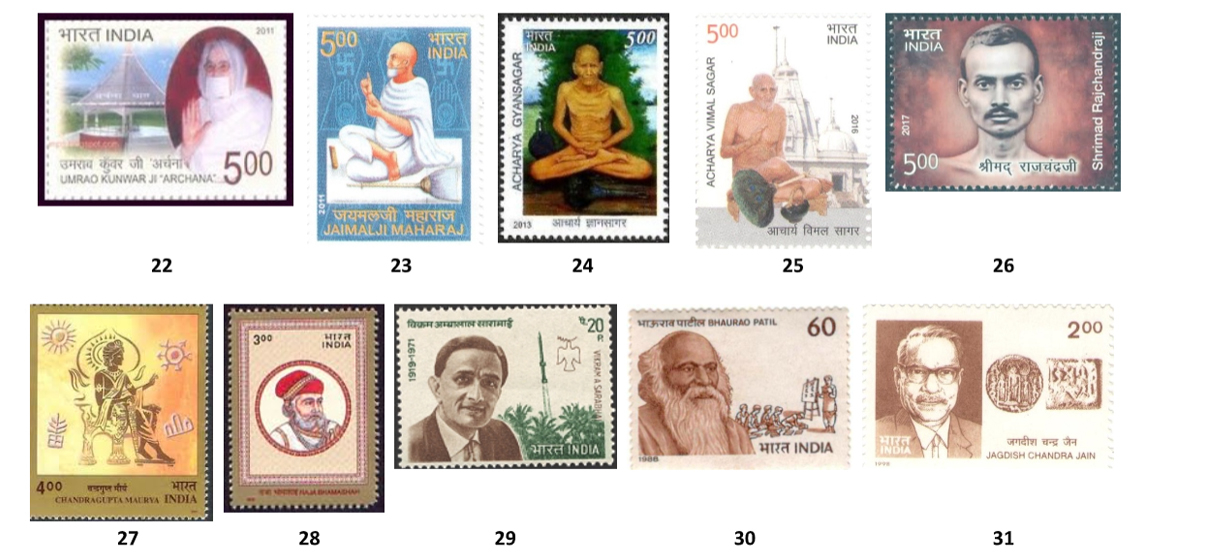
Mahasati Umrao Kunwar Ji “Archana” had written many religious books and established hospitals, publication houses and welfare institutes at various places. On 30th April 2011, India Post issued a commemorative stamp on her (Stamp-22).
Yuga Pradhan Acharya Jaimal Ji Maharaj was born in the year 1708. He had practiced three jewels of Jainism, right faith, right knowledge and right conduct. Writer of many books, Jaimal Ji was also a social reformer. He had worked for the upliftment of women. A stamp was issued on him on 25th Sept. 2011 (Stamp-23).
Digambar Jain Acharya Gyansagar Ji Maharaj (1891-1973) was an outstanding scholar of ancient Jain literature and has written 4 Sanskrit epics and 3 more Jain texts. India Post issued a stamp on Acharya Gyansagar Ji Maharaj on 10th September 2013 (Stamp-24).
Digambar Jain Acharya Vimalsagar Ji Maharaj was born on 18th September 1916 at Kusma (U.P.). Acharya position was bestowed upon him on 5th November 1960. He had covered more than 50 thousand kms. across the country on foot preaching Ahimsa, Vegetarianism, Aparigraha and Anekant. He had fasted on 3266 days during his ascetic life and never taken cereals, ghee, curd, oil, and salt after taking Muni diksha. He had written many books and motivated people to preserve Jain culture and renovation of many old temples. He attained his Samadhi on 29th December 1994. A stamp was issued on him on 14th December 2016 (Stamp-25).
Shrimad Rajchandra Ji (9 November 1867 – 9 April 1901) was a Jain poet, philosopher, scholar, and reformer. He was a prodigy and had recollection of many of his past lives at the age of seven. He performed Avadhan, a memory retention and recollection test that gained him popularity, but he later discouraged it in favour of his spiritual pursuits. He wrote a large number of philosophical poems and books. He is best known for his teachings on Jainism and his spiritual guidance to Mahatma Gandhi. India Post issued a stamp on him on 29th June 2017 (Stamp-26).
The Indian Government had issued a stamp on Jain ruler Chandragupta Maurya on 21st July 2001 (stamp-27). Chandragupta Maurya conquered many states including Magadha and formed a vast Mauryan Empire with the capital at Pataliputra in 322 B.C. During his regime, India prospered and developed a lot in terms of Trade & Commerce, Art & Culture. He adopted Jainism, renounced worldly affairs, became a disciple of Jain Muni Bhadrabahu Swami and followed him to South India where at Shravanbengola he spent his last days.
Jain Raja Danavira Bhamashah was the childhood friend, colleague, and very faithful advisor of Mewar king Maharana Pratap. Bhamashah’s loyal support was pivotal to the career of the Maharani Pratapa. When Maharana Pratap was defeated, Bhamashah had given his complete wealth to Maharana Pratap in his fight for freedom, that too at a time when the king had lost all hope and was hiding in the mountains to save his family. The Indian Postal Department issued a set of four stamps on historical personalities on 31st December 2000 which includes Raja Bhamashah (Stamp-28).
World famous Jain space scientist Dr. Vikram Ambalal Sarabhai was honoured by the Government of India by issuing a stamp on his first death anniversary on 30th December 1972 (Stamp-29). This 20 paisa stamp was issued showing him with his ROHINI rocket and a dove. He was the father of India’s space programme.
Famous Jain philanthropist Dr. Karmveer Bhaurao Patil devoted his whole life to the task of rural mass education and the upliftment and welfare of the depressed and downtrodden, emphasizing the removal of untouchability and advocating equality. A stamp was issued on 9th May 1988 in his honor (Stamp-30).
World renowned philosopher Dr. Jagdish Chandra Jain was the authority on Jain studies. He had written more than eighty books and received several awards including Soviet Land Nehru Award. He was honoured by issuing a stamp on 28th January 1998 (Stamp-31).
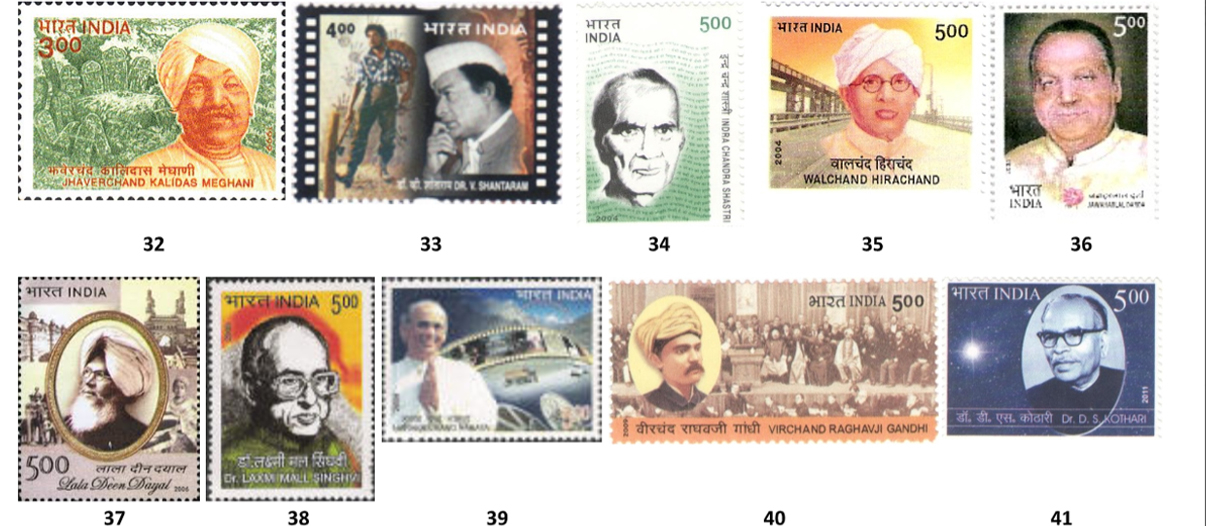
Jain personality Mr. Jhaverchand Meghani (28th August 1896 – 9th March 1947) was a distinguished poet, writer, journalist, social reformer, and freedom fighter from Gujarat. Mahatma Gandhi spontaneously gave him the title of Rastriya Sayara (National Poet). He authored more than 100 books. He was also the editor of Phulchhab Newspaper. His poems are taught as a part of the syllabus in Gujarat Board Schools (GSEB). India Post issued a stamp on him on 14th September 1999 (Stamp-32).
Mr. V. Shantaram was a great filmmaker, film producer, and actor. He was born on 18th Nov 1901 at Kolhapur to a Marathi Jain family and died on 30th October 1990 in Mumbai. Shantaram, fondly known as Annasaheb, had an illustrious career as a filmmaker for almost seven decades. He had received many awards including Dadasaheb Phalke Award (1985) and Padma Vibhushan (1992). A postage stamp dedicated to Shantaram was released by India Post on 17th November 2001 (Stamp-33).
Dr. Indra Chandra Shastri was a learned Jain author and philosopher. He was proficient in Hindi, Urdu, Sanskrit and Prakrit languages. He composed eight volumes of Shri Jain Siddhanta Bol Samgraha giving the gist of Jain literature, canonical as well as post canonical. Dr. Shastri had created 12 original works besides contributing a large number of Sanskrit, Hindi and English articles and research papers. India government issued a stamp in his honour on 27th May 2004 (Stamp-34).
Famous Jain industrialist Mr. Walchand Hirachand Doshi (23rd November 1882 – 8th April 1953) was the founder of the Walchand group. He established India’s first modem shipyard, first aircraft factory and first car factory. He also established construction companies, sugarcane plantations, sugar factories, confectioneries, engineering companies and many other businesses. The government of India issued a postage stamp honoring him on 23rd November 2004 (Stamp-35).
Indian freedom fighter Mr. Jawaharlal Darda was a Jain personality from Maharashtra. He had been posthumously conferred a Lifetime Achievement Award at UK’s House of Commons. Jawaharlal Darda joined the country’s freedom movement and became an active Congress leader, and he also founded the Lokmat group of newspapers. He had also served as Minister in Maharashtra for several years. A stamp was issued on Mr. Jawaharlal Darda on 2nd December 2005 (Stamp-36).
Famous Photographer Lala Deen Dayal was born in 1844 in a Jain family in Meerut. His first patron was Maharaja Tukoji Rao II of Indore, who introduced him to the British Agent, which eventually led to his appointment as “Photographer to His Excellency, the Viceroy”. He set up studios in Indore, Mumbai and Hyderabad. He became the court photographer to the Nizam of Hyderabad. He was also commissioned to photograph the Governor General’s tour of Central India. Deen Dayal’s albums of India views and ancient monuments became very popular. He died in 1905. The India Post issued a stamp on him on 11th November 2006 (Stamp-37).
Dr. Laxmi Mall Singhvi was an eminent jurist, a leading constitutional expert, an acclaimed diplomat, an expert in public and private international law, a distinguished parliamentarian, a prominent exponent of human tights, a doyen of the Indian Bar, a citizen-statesman, an author, poet, publicist, linguist, and litterateur. He was born on 9th November 1931 in Jodhpur into a Marwari Jain family. He was a gold medalist in B.A., then did M.A., LL.B., LL.M. and LL.D. He was conferred Padma Bhushan in 1998. Dr. Singhvi died on 6th October 2007 in New Delhi. A stamp was issued on him on 8th December 2008 (Stamp-38).
Shri Harakh Chand Nahata was a prominent Indian businessman and social leader. He was born on 18th July 1936 at Bikaner to an illustrious Jain family. He contributed a lot for the development of cinema in Eastern India through his Technical Studio. He was a leading social leader and philanthropist. He breathed his last on 21st February 1999 at New Delhi. A stamp was released on Shri Nahata on 28th February 2009 (Stamp-39).
Shri Virachand Raghavji Gandhi (25th August 1864 – 7th August 1901) was a Jain scholar who had represented Jainism at the first World Parliament of Religions held in Chicago in the year 1893. A barrister by profession, he worked to defend the rights of Jainas and wrote and lectured extensively on Jainism, other religions, and philosophy. He also founded the Gandhi Philosophical Society and the Society for the Education of Women in India. The India Post issued a stamp on him on 8th November 2009 (Stamp-40).
Famous Jain scientist and great educationist Dr. D. S. Kothari (6th July 1906 – 4th February 1993) was General President of the Indian Science Congress in 1963. He was elected President of Indian National Science Academy in 1973. His notable research on Statistical Thermodynamics and Theory of White Dwarf Stars gave him international reputation. The Padma Bhushan was conferred on him in 1962 and the Padma Vibhushan in 1973. A stamp was released on Dr. Kothari on 6th July 2011 (Stamp-41).
Famous Jain Journalist Mr. Karpoor Chandra Kulish (20th March 1926 – 17th January 2006) was the founder of the Rajasthan Patrika newspaper. He was a brilliant journalist, a scholar of Vedas, a thinker, a philosopher, and a poet. He has to his credit a number of books. He gave talks at the Universities of Bonn and Hamburg, the Institute of Indology in Frankfurt and the International Forum for a Better World, Cologne. A stamp was issued on Mr. Kulish on 16th May 2012 (Stamp-42).
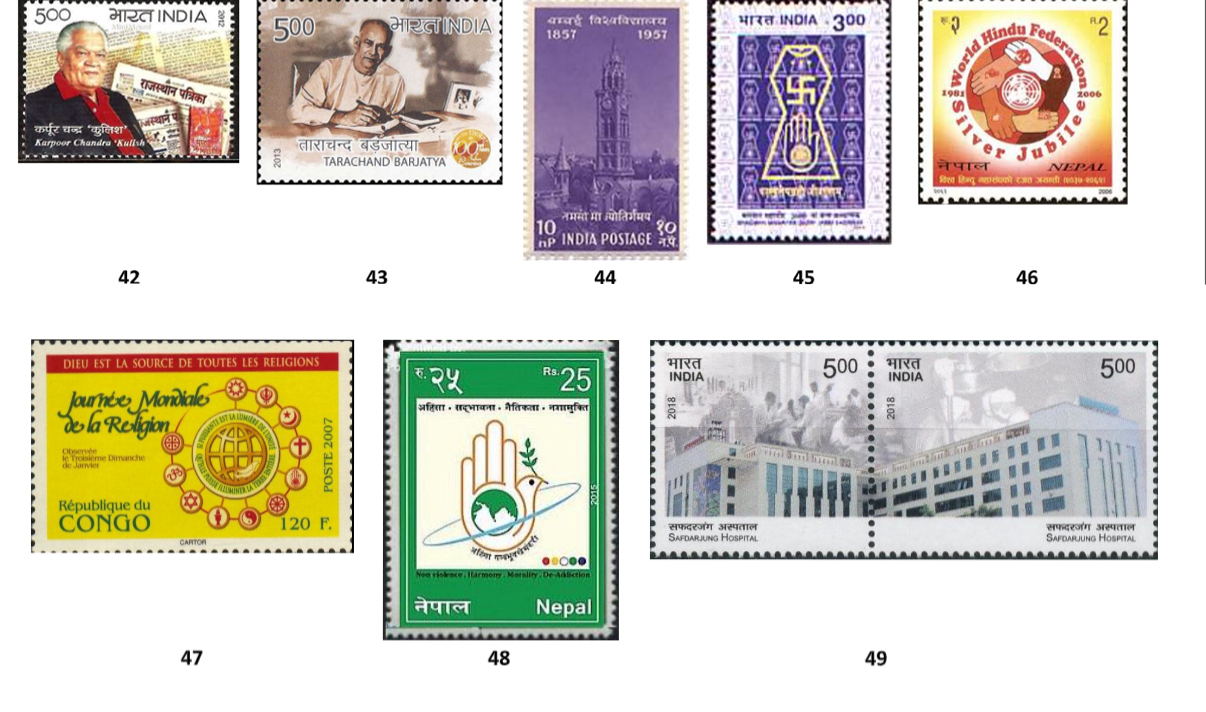
Jain film producer Mr. Tarachand Barjatya (10th May 1914 – 21st September 1992) has produced many successful Hindi films. He established Rajshri Productions which continues to produce films even today. His mainstay was family-oriented films based on human values. Tarachand Barjatya was appointed by the Government of India as a member of the committee of films with Mrs. Indira Gandhi as its Chairperson. The Indian government had issued a stamp on Mr. Barjatya in the denomination of 5 rupees on 3rd May 2013 (stamp-43).
The Rajabai Clock Tower is one of the most beautiful tourist attractions of South Mumbai. Situated in the campus of Bombay University, this 85-foot-high tower was designed by English architect Sir George Gilbert Scott. The foundation stone of the tower was laid on 1st March 1869 and the construction was completed in November 1878. It was constructed by a Jain businessman Premchand Roychand in the name of his mother Rajabai. Rajabai was blind and a stringent follower of Jainism. According to Jain traditions and customs she used to have her dinner before sunset. The evening bell of the tower helped her know the time without taking anyone’s help. A stamp issued on 31st December 1957 depicts a photo of this Rajabai Tower (Stamp 44).
To commemorate the 2600th Janma Kalyanak of 24th Jain Tirthankar Bhagwan Mahavir, a stamp of 3 rupees had been issued by the Indian Postal Department on 6th April 2001 (stamp- 45). The stamp bears the symbol summarizing Jain teachings which was adopted by all the Jaina groups during 2500th Nirvan Mahotsav of Bhagwan Mahavir with the words “Parasparopagraho Jivanam”.
The above symbol has also been depicted in two foreign stamps. First is a stamp issued by Nepal on 6th April 2006 on the occasion of the Silver Jubilee of World Hindu Federation (Stamp-46). The second foreign stamp was issued by Congo on 20th January 2007 to commemorate World Religion Day (Stamp-47).
During Ahimsa Sadbhavana Yard of Acharya Mahashraman, Nepal’s government had issued a beautiful stamp of 251- denomination on 16th August 2015 (Stamp-48).
On the occasion of the 80th anniversary of Safdarjung Hospital, New Delhi a Se-tenant (pair of 2 stamps of 5 rupees each) was issued on 27th April 2018. These stamps depict Safdarjung Hospital and Bhagwan Mahaveer Medical College buildings (Stamp-49).
The above discussion reflects that there is a lot of influence of Jain culture on the Indian communication system – especially on the postal stamps of India.







